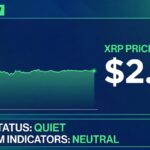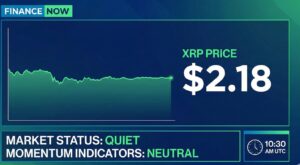The adoption of blockchain technology has significantly increased in recent years. Many countries have realized the utility of blockchain, especially as a financial tool. The Middle East is not left out of this blockchain wave. So far, many Middle Easterners have turned to blockchain technology and cryptocurrencies.
In fact, a recent survey by Chainalysis reported that the Middle East and North Africa (MENA) is the fastest-growing crypto market. According to the study, users in the MENA region received about $566 billion through crypto transactions between July 2021 and June 2022. The countries with the highest transaction volumes are Turkey, Morocco, and Egypt. This demonstrates the increasing blockchain and crypto adoption rate in the Middle East.
There are some reasons behind the skyrocketing increase in blockchain adoption within the MENA region. First is inflation. While many countries are currently battling with inflation, some Middle Eastern countries have been consistently combating inflation and currency depreciation. As a result, citizens have turned to cryptocurrencies as a store of value.
Apart from this, blockchain technology offers numerous benefits, particularly within the context of security and data management. Companies are increasingly adopting the technology to safeguard their data and reduce manipulation.
However, despite these impressive adoption numbers in the Middle East, there are still some threats that could potentially hinder the growth of blockchain adoption in the Middle East.
Threats to Blockchain Adoption in the Middle East
The first is the crackdown on cryptocurrencies and blockchain technology in specific Middle Eastern countries. For instance, Qatar has banned Bitcoin trading within its territory. This decision was made as far back as 2020 and has not been reversed. Other Middle Eastern and North African countries that ban blockchain or crypto include Iraq and Morocco. The ripple effect of this crackdown on blockchain technology is that adoption will continually be limited. The lack of regulation also hinders the growth of blockchain-related companies in these countries.
Another factor that could threaten blockchain technology adoption in the Middle East is the shortage of blockchain talent. While this problem is mainly global, the need for blockchain talent is equally prevalent in the Middle East. As far back as 2017, Coin Desk reported that the lack of skilled talent in the blockchain industry had become a primary concern for stakeholders. The same problem was also reported as recently as 2022, with blockchain companies reporting that they were experiencing a talent shortage crisis.
Lastly, one of the most prevalent problems with blockchain adoption is interoperability. Many blockchains lack interoperability and cannot communicate with blockchains outside their network. While blockchain bridges have been developed to navigate this problem, the lack of interoperability is still a significant hindrance for companies seeking to adopt blockchain technology.
Conclusion
The Middle East has proven to be a mainstay for blockchain technology and cryptocurrency adoption, with countries like Saudi Arabia and UAE taking the lead. Regardless, more Middle Eastern countries must embrace the idea of blockchain technology. This will significantly increase blockchain adoption in the region.




























